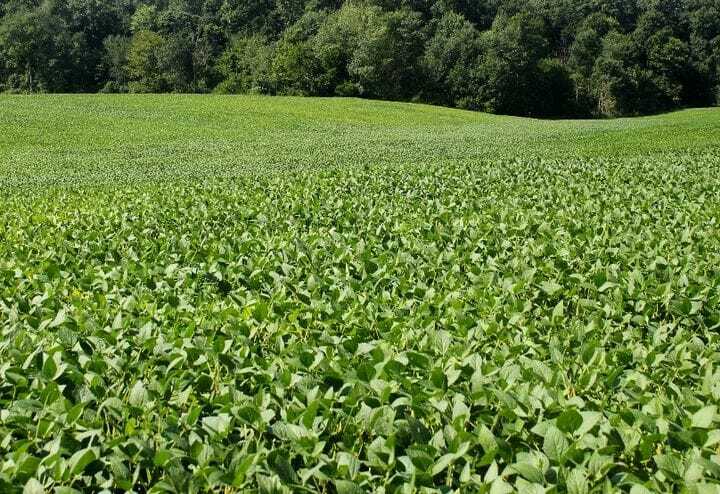Nitrogen Deficiency in Soybeans
Even as nitrogen-fixing plants, nitrogen deficiency in soybeans can be problematic for farmers. Soybeans can fix up to 50% of their own nitrogen while the other 50% is sourced from soil. Root development and soil health are key drivers of nitrogen deficiency.
A primary cause of nitrogen deficiency is poor inoculation. Rhizobia – the nitrogen-fixing bacterium responsible for prompting nodulation – cannot survive well in coarse, sandy or saturated soils. Cold and wet soils can also suppress rhizobia activity and reduce nodulation.
Soils with low pH can prevent root nodulation and reduce nitrogen absorption Flooding or highly saturated soils can also prevent nitrogen uptake, even if nodulation occurred successfully.
Scouting for Nitrogen Deficiency
Nitrogen is a mobile nutrient, moving throughout the entire plant. It moves to the newest leaves first, leaving the oldest leaves more susceptible to deficiency. In nitrogen-deficient soybeans, the lowest leaves will appear a pale shade of green or show signs of yellowing. Some leaves will also have dark green veins.
Be sure to check nitrogen levels in the soil before R1. As nodules can appear as soon as V1. Check the health of nodules by squeezing them open. If A pink color on the inside indicates that nodules are active and healthy.
Treatment and Implications
A single bushel of soybeans uses 4.2 pounds of nitrogen. Purdue University observed a 38% decrease in yield from nitrogen deficiency – a decline from 65 bu/acre to 40 bu/acre. Rhizobia population can carry over from season to season and continue to support soybean growth. We advise applying inoculant in fields where soybeans have not recently grown. The inoculant can help to stimulate rhizobia activity and promote nodulation.
It is advised to apply 20 to 40 pounds of nitrogen per acre during the R3 growth stage. However, applying nitrogen at planting – especially too much nitrogen – does not increase yield and can actually reduce nodulation. It’s important to determine the best nitrogen application and treatment plan to fit your unique needs. Contact your Data Forard™ Advisor or Latham Representative to discuss your options.
